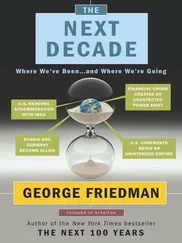It was the least religious women who were least likely to live a very long life. These women were not religious in young adulthood and stayed that way throughout their lives. They were generally bright and productive but they were less likely to be very extroverted and trusting, less likely to get and stay married, and less likely to have children or to be extensively involved in helping others.
What about the women like Donna whose religious inclinations declined with age? For them, we had to consider the various influences in their lives that occurred after 1940, as they aged. These women tended to be married, with children, and they, too, were careful about their health and often involved in volunteer service activities. As these women became less involved with religion, however, what emerged as important to their longevity were their social ties and health behaviors. Following her divorce, Donna was working hard to support her two boys, was disappointed in relationships, and had little time for or interest in friends and outside activities. In contrast to those who thrived, she had no strong social ties to replace the ones she lost as she gradually withdrew from church. Of course, the fact that she smoked with her associates at work also likely played a key role in her early death.
Herein lay the core of our striking finding: overall it was not religious involvement per se that was so important to long life, although it helped many women. Rather it was the other characteristics that tended to go along with being religious that explained why these women lived longer. It was not the meditative effect of prayer or the act of regular attendance at religious services that mattered. It was a much broader collection of associated acts and attributes. Those who gradually left their religious involvement were at high risk if they also let their community involvement falter and diminish.
If these findings about religious inclination and long life are not a fluke, then other well-designed studies should yield similar results. One seven-year health study examined the religious involvement of over ninety thousand American women aged fifty and older as part of the Women’s Health Initiative. 79 79 For the large-scale, seven-year women’s health study, see E. Schnall, S. Wassertheil-Smoller, C. Swencionis, V. Zemon, L. Tinker, M. J. O’Sullivan, L. Van Horn, and M. Goodwin, “The Relationship between Religion and Cardiovascular Outcomes and All-Cause Mortality in the Women’s Health Initiative Observational Study,” Psychology and Health 25, no. 2 (2010): 249-63.
This huge study did confirm that the women who were more religiously involved were less likely to die during the period of the study. This result remained even after taking into account influences such as age, ethnicity, income, education, and certain aspects of health status such as smoking and drinking. These confirming results, as well as those from other recent studies, increased our confidence that the detailed findings that have emerged from our studies of the Terman participants are pointing to some fundamental insights about the paths to good health.
What It Means for You: Guideposts to Health and Long Life
While we cannot provide empirical corroboration about whether being pious is important to gaining eternal life, we did uncover good evidence that at least some aspects of congregational participation are relevant to the length of one’s present life. The guideposts we identified, however, do not point directly to the church, the synagogue, or the mosque. Nor do they steer us directly to the meditation garden, with incense and candles. Instead, the most important characteristics, especially for women, are linked to social networks and community engagement.
Look again at the questions you answered about your religious experience in this chapter, but now think not of your overall score but instead of how you got that score. Our findings suggest that someone who scores lots of points from feeling religious or from watching television evangelists will not likely have the same experiences, or positive outcomes, as someone who is actively engaged in a religious community.
For the Terman men, and often for men more generally, the relevance of religion to health is overwhelmed by other influences—their families and their careers. The Terman men relied more on their wives in social realms, and so religious ties were less important to their health. And those unmarried but healthy men like John, who was not at all religious in the traditional sense yet still lived a long life, usually maintained close relationships with friends and colleagues outside the context of religious organizations.
Some people feel they are not devout enough, and they resolve to meditate further or to spend more hours in prayer. While this makes many people feel better and more compassionate, our findings suggest that these practices are not central to health promotion. Instead, the good health habits fostered by religious practice and especially the social engagement that is so much a part of religious community are the likely explanations for the health of many religious folks.
After making this discovery, we needed to understand more about the social ties that appeared health promoting. Was it the secure feeling of being in a congregation or the volunteer work or having many friends? What steps can we take? We explore these matters, and the sometimes paradoxical discoveries, in the next chapter.
CHAPTER 12
Confidants, Networks, and the Power of Social Life
Linda had a lot of social connections, including with six other women she was in contact with weekly. Not only that, but her large extended family lived in the same town, fairly close to her home. James, in contrast, had fewer connections and associates, but he felt especially socially secure and supported. He perceived he could count on his now-adult offspring and he could confide in them whenever he wished. Many other sorts of social links were also apparent among the Terman participants. We wondered which aspects of social ties would be most relevant to health and long life.
Social support is a catchall phrase used to describe the ties we have to others. But it is too broad and confusing. Sometimes it refers to the size of your social network—how many friends and relatives you have, particularly how many you regularly see or talk to. At other times, researchers define social support as the feelings you have about being cared for—whether you have people who love you and cheer you up when you are down.
To confuse matters even further, sometimes researchers focus on the social support that comes from assisting others—measuring whether people come to you for advice and how often you lend a hand to friends and neighbors. Helping others, expressing gratitude, and acting as a mentor are healthy patterns that are often recommended to those trying to fight depression or improve their sense of well-being. These are well-known to work—to cheer you up—in the short term. But are they relevant to long life?
Our first challenge was to figure out how best to measure the social support of the Terman participants. While many researchers have conducted short-term studies of social support, they’ve used modern measures not available in Terman’s time.
Combing the archives, with lots of help from graduate student Keiko Taga, we deemed certain activities and relationships to be markers of social support: frequency of visiting and communicating with relatives, friends, and neighbors; helping friends or neighbors; doing community service; satisfaction with friendships and social contacts; number of intimate and companionate relationships; quality relationships with family and close relatives; and frequency of meetings with social or community groups. Using statistical analyses, we combined and condensed this and other related information to reflect the major ways of viewing social support. In particular, we considered network size, feeling connected, and helping others. We then checked to make sure that our measures captured social support in the same way that modern measures do (using the same correlational approach we’d used for the personality scales).
Читать дальше











